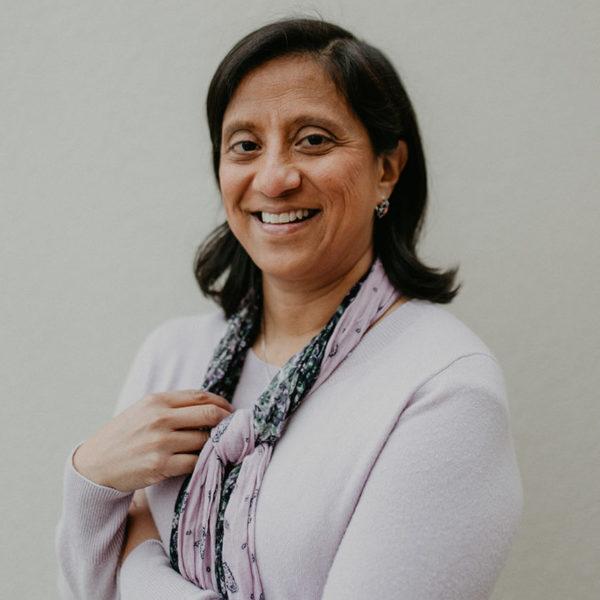Leadership in a time of crisis: Why The California Endowment is doubling its payout rate to 10%
Learn why The California Endowment is doubling its payout rate to 10% and taking steps to holistically support their grantees—left navigating through nonprofit crisis after crisis in 2025.

Californians have been navigating one crisis after another since the start of 2025. First, the fires in Los Angeles left hundreds of families without homes and jobs. Then the federal immigration raids upended the lives of millions of families, separating hard-working parents from their children, forcing small businesses to shutter, and creating widespread fear. Most recently, federal cuts to Medicaid and other safety-net programs have created uncertainty for those who rely on these services to stay healthy and thrive. Too many families and the nonprofits that serve them have been pushed to a breaking point, and the work The California Endowment (TCE) was established to do—to improve the health and well-being of all Californians—is being tested.
This isn’t a time for philanthropy to be merely responsive but to build something new for the future—a time to think differently about our work as funders, including about our payout rate; how we deploy resources and show up as civic institutions; and how we listen to the people whose lives are being impacted daily.
That’s why we are doing things differently at TCE to support our grantees.
Boosting the payout rate, streamlining grantmaking, and strengthening grantees
For starters, we’re getting more money out the door faster than ever. To support the urgent needs of communities across California, we’ve increased our payout rate to up to 10% over the next three years, which amounts to up to an additional $160 million in grant funding each year. Our goal with these additional dollars is to ensure Californians can continue to access health care at a time when our health care and public health systems are being dismantled.
We’ve also removed our own barriers that often create more work for grantees, including suspending cumbersome grant reporting requirements, streamlining our grantmaking processes, and issuing more general operating support grants that allow for flexibility and reassure our grantees we trust they know best how to support Californians.
Additionally, we’re asking grantees what else they need beyond funding, and we’re listening to them. While money is crucial, we often hear from grantees that their immediate needs range from access to legal counsel to an overhaul of their security protocols, to sustainability audits, to professional development, and so on. Therefore, we’re connecting our grantees with resources and experts to support legal capacity and nonprofit stability and ensure they have a solid foundation from which to continue their important work.
Responding boldly to protect hard-won progress
For decades, TCE has worked with grantees to ensure more Californians have access to health care, parks, and clean air and water. Through our Health4All campaign, our grantees have helped Californians access Medi-Cal regardless of immigration status. We’ve nearly achieved what once seemed like an elusive goal—universal health care coverage—as 94% of Californians now have health insurance. Recognizing that this progress was at risk, our board took the bold step to double our payout rate to 10%.
I recognize every foundation’s situation is different, with access to different resources and different responsibilities they need to uphold. Doubling the payout rate may not be possible for every foundation. However, there are various steps funders can take to support grantees during times of uncertainty.
What we’re learning: How funders can step up to strengthen the safety net
First, we learned that it was important to establish a clear understanding with our board about how we want to show up during periods of instability. We had discussions with our board about our risk tolerance, financial flexibility, and responsibility to grantees. This conversation gave our board and staff a shared alignment around risk that allows staff to respond to grantees’ needs quickly with the backing of our board.
Second, we learned that framing a payout increase conversation around moral imperatives resonated with our board. This is the second foundation where I’ve been able to work with a board and team to double our payout rate, and while it can be scary to tee-up this conversation, the possibility of success is worth the risk. In many ways, the 5% payout requirement has acted as a ceiling for foundations and limited our ability to be more flexible and ambitious with our grantmaking. Instead, we need to think of 5% as the floor. Encourage your board to grapple with the tension between the moral imperative of achieving your mission with the fiduciary duty of protecting the endowment.
Supporting grantees starts with listening
Finally, we learned to take the time to listen to grantees and find ways to support them beyond grantmaking. Many nonprofits are having to quickly reprioritize their work and shift tactics as they respond to the community’s changing needs. The best way to show we care about their success and the well-being of the communities they serve is to ask how we can help them through this challenging moment.
However well our past efforts may have served communities, we’re now faced with new challenges. Times of crises will test us all but will also force us to lead and reinvent how philanthropy does its work to build a better future.
Photo credit: SDI Productions via Getty Images
About the authors
